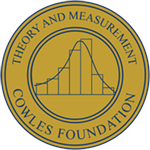Document Type
Discussion Paper
Publication Date
6-2022
CFDP Number
2335
CFDP Pages
52
Journal of Economic Literature (JEL) Code(s)
J71, J78, D91, D63
Abstract
In selection processes such as hiring, promotion, and college admissions, implicit bias toward socially-salient attributes such as race, gender, or sexual orientation produces persistent inequality and reduces utility for the decision-maker. Recent works show that interventions like the Rooney Rule, which require a minimum quota of individuals from each affected group, are very effective in improving utility when individuals belong to at most one affected group. However, in several settings, individuals belong to multiple affected groups and, consequently, face more extreme implicit bias due to this intersectionality. We consider independently drawn utilities and show that, with intersectionality, the aforementioned non-intersectional constraints only recover part of the utility achievable in the absence
of implicit bias. On the other hand, we show that appropriate lower-bound constraints on the intersections recover almost all the utility achievable in the absence of implicit bias. And, hence, offer an advantage over non-intersectional approaches to reducing inequality.
Recommended Citation
Mehrota, Anay; Pradelski, Bary S.R.; and Vishnoi, Nisheeth, "Selection in the Presence of Implicit Bias: The Advantage of Intersectional Constraints" (2022). Cowles Foundation Discussion Papers. 2695.
https://elischolar.library.yale.edu/cowles-discussion-paper-series/2695


